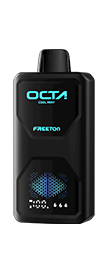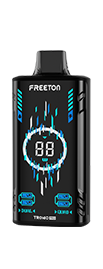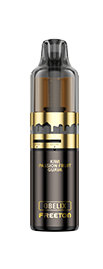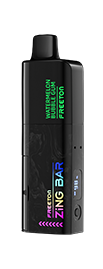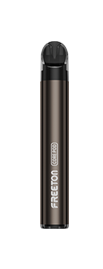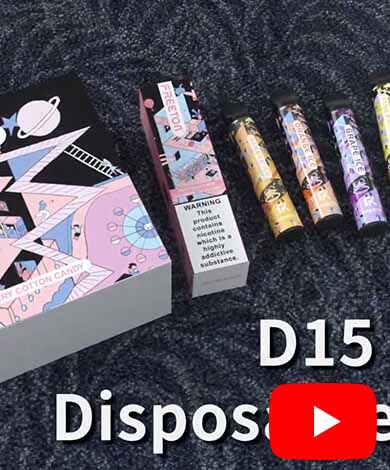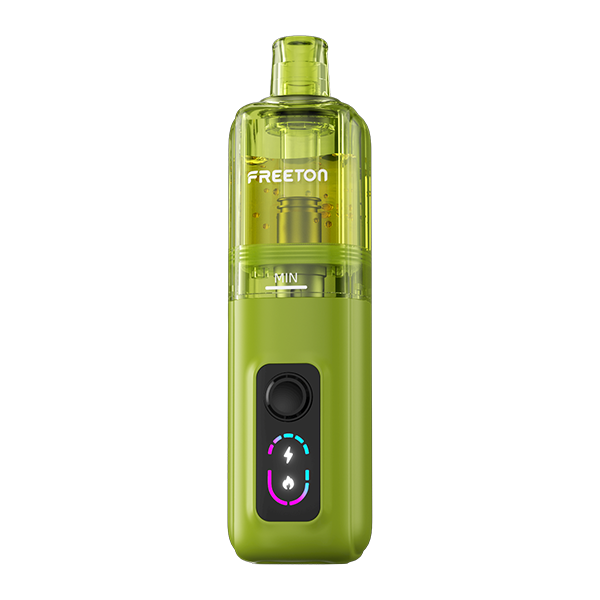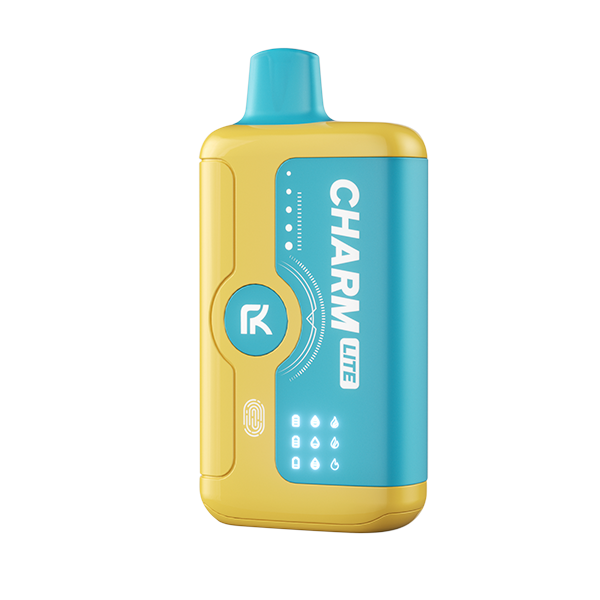
Introduction In recent years, the vaping landscape across Europe has witnessed a remarkable transformation, with disposable vapes emerging as a dominant trend among both seasoned smokers and newcomers alike. This shift towards disposables marks a significant evolution in consumer preferences, reflecting a broader search for convenience, variety, and accessibility in smoking alternatives. As we edge […]
Introduction
In recent years, the vaping landscape across Europe has witnessed a remarkable transformation, with disposable vapes emerging as a dominant trend among both seasoned smokers and newcomers alike. This shift towards disposables marks a significant evolution in consumer preferences, reflecting a broader search for convenience, variety, and accessibility in smoking alternatives. As we edge closer to 2024, it's evident that disposable vapes are not just a fleeting trend but a fixture in the European vaping market, underscored by their growing visibility in smoke shops, convenience stores, and online platforms.
Tracing back the lineage of vaping, the journey from bulky, refillable devices to sleek, compact disposables encapsulates a decade of innovation and consumer adaptation. Initially introduced as a reusable solution for smokers looking to quit, vaping devices have undergone numerous iterations—morphing from the early, cumbersome models to the latest generation of disposable vapes. This evolution reflects a nuanced understanding of smoker's needs and a response to the demand for an effortless vaping experience without the maintenance and commitment required by traditional setups.
The surge in popularity of disposable vapes across Europe is more than just a testament to changing tastes; it's a reflection of a society increasingly inclined towards disposability and convenience in various aspects of daily life. However, this trend also mirrors the global vaping community's desire for diversity in flavors, strengths, and experiences—a demand that manufacturers have been keen to satisfy with an ever-expanding catalog of options.
As we delve into the intricacies of the disposable vape phenomenon, it's crucial to explore not just the factors fueling its rise but also the implications it holds for the future of vaping, public health, and environmental sustainability. The journey of disposable vapes from niche to mainstream offers a fascinating lens through which to view the evolving relationship between technology, lifestyle, and consumer culture in Europe as we move towards 2024.

Understanding Disposable Vapes
At the heart of the vaping revolution lies the disposable vape, a device designed to offer a convenient and straightforward smoking experience without the complexities associated with traditional vaping systems. These single-use devices are comprised of several key components: a battery, e-liquid, coil, and mouthpiece, each playing a crucial role in delivering the signature vapor that users inhale.
The battery powers the device, activating the coil or heating element which then vaporizes the e-liquid contained within. This vapor passes through the mouthpiece, where it is inhaled by the user. Disposable vapes come pre-charged and pre-filled with e-liquid, eliminating the need for refilling or recharging during their lifespan. Once the e-liquid is depleted or the battery runs out, the entire device is disposed of, making it a convenient choice for users seeking a no-fuss vaping option.
The appeal of disposable vapes extends beyond their simplicity. For many, these devices represent a hassle-free entry point into vaping, free from the maintenance and knowledge required by more complex systems. Their compact size and lack of removable parts make them highly portable and discreet, further contributing to their popularity. Additionally, disposable vapes are available in a wide range of flavors and nicotine strengths, catering to a broad spectrum of preferences and making them an attractive option for both new and experienced vapers.
However, the convenience of disposable vapes comes with considerations regarding cost-effectiveness and environmental impact, as the single-use nature of these devices generates more waste compared to their rechargeable counterparts. Despite these concerns, the market for disposable vapes continues to grow, driven by consumer demand for easy-to-use, accessible vaping options. As we explore the latest trends and innovations in the disposable vape market, it's clear that these devices have carved a significant niche within the European vaping landscape, reshaping the way people approach smoking cessation and recreational vaping.
The Latest Trends in Disposable Vapes for 2024
As we venture into 2024, the disposable vape market in Europe is witnessing a surge of innovation and diversification, catering to an ever-expanding consumer base seeking novel vaping experiences. The latest trends in disposable vapes are characterized by advancements in flavor profiles, technological enhancements, and a growing emphasis on device efficiency and sustainability.
New Flavors and Formulations
One of the most noticeable trends is the introduction of new, exotic flavors and unique e-liquid formulations. Manufacturers are pushing the boundaries beyond traditional tobacco and menthol flavors, introducing a plethora of options ranging from fruity to dessert-inspired varieties. This expansion caters not only to the diverse palate of consumers but also to those looking to transition from smoking to vaping, offering flavors that are distinctly different from conventional cigarettes.
Technological Innovations
On the technological front, disposable vapes are seeing significant improvements in battery life and vapor production. Innovations such as more efficient battery utilization and enhanced coil designs are enabling longer-lasting use, allowing vapers to enjoy their devices for extended periods without a compromise in performance. This not only improves the overall user experience but also addresses one of the common criticisms of disposable vapes — their limited lifespan.
Moreover, the industry is witnessing a trend towards the development of adjustable airflow systems in disposable devices, a feature traditionally reserved for reusable vaping systems. This allows users to customize their vaping experience, adjusting the draw resistance to suit their preference, further narrowing the gap between disposable and more advanced vaping devices.
Sustainability Efforts
Amid growing environmental concerns, there is a notable shift towards making disposable vapes more sustainable. Innovations in this area include the use of biodegradable materials and efforts to reduce the environmental footprint of these devices. Although the disposable nature of these products inherently poses challenges to sustainability efforts, manufacturers are increasingly committed to finding solutions that mitigate environmental impact while meeting consumer demand for convenience and performance.
These trends underscore the dynamic nature of the disposable vape market in Europe, reflecting both the industry's response to consumer preferences and its commitment to innovation. As we continue to explore the evolving landscape of disposable vapes, it becomes clear that these devices are not only here to stay but are also shaping the future of vaping.
The Role of Disposable Vapes in Smoking Cessation
In the landscape of smoking cessation, disposable vapes have emerged as a contentious yet pivotal tool. As Europe grapples with the challenges of reducing smoking rates, the role of disposable vapes in aiding smokers to quit traditional cigarettes has garnered significant attention from both public health experts and consumers alike.
Transitioning from Traditional Smoking
Disposable vapes have been lauded for their role in providing a less harmful alternative for smokers looking to quit. The simplicity and convenience of these devices, combined with the absence of tar and other carcinogens found in traditional cigarettes, make them an attractive option for individuals attempting to transition away from smoking. The tactile sensation and nicotine delivery that disposable vapes offer mimic the act of smoking, helping to satisfy cravings in a way that other nicotine replacement therapies (NRTs) might not.
Insights from Health Experts
Health experts have provided mixed reviews on the efficacy of disposable vapes as a smoking cessation tool. While some praise the potential for these devices to reduce harm and aid in quitting smoking, others express concern about the lack of long-term data on their safety and the risk of non-smokers, particularly young people, starting to vape. However, a consensus exists on the need for further research to fully understand the implications of vaping on public health.
Dr. Jane Wilson, a renowned expert in tobacco control, states, "Disposable vapes can serve as a crucial step for many in their journey to quit smoking. However, it's imperative that we continue to monitor their use and ensure they are part of a comprehensive approach to smoking cessation, which includes support and guidance from healthcare professionals."
Regulatory Considerations
The regulatory landscape in Europe also plays a significant role in determining the accessibility and use of disposable vapes for smoking cessation. With each country adopting varying degrees of regulation, from advertising restrictions to limits on nicotine content, the availability of disposable vapes as a cessation aid is significantly influenced by local legislation.
Future Directions
The debate surrounding the role of disposable vapes in smoking cessation is ongoing, with new studies and policies continuously shaping the discourse. As the market for disposable vapes evolves, so too does the understanding of their potential benefits and risks. For many, these devices represent a hopeful pathway away from smoking, offering a less harmful alternative that aligns with the goal of reducing the public health burden of tobacco.
In summary, the role of disposable vapes in smoking cessation is complex and multifaceted. While they offer promise as a tool to help smokers quit, the importance of cautious optimism, rigorous research, and tailored regulatory frameworks cannot be overstated. As we move forward, the focus must remain on maximizing public health benefits while minimizing potential risks.
Environmental Impact and Sustainability Concerns
The surge in popularity of disposable vapes has raised significant environmental concerns, particularly regarding their sustainability and the implications of increased waste. As the European market continues to expand, the environmental footprint of these single-use devices becomes a pressing issue, demanding attention from manufacturers, consumers, and policymakers alike.
The Challenge of Disposable Vapes
Disposable vapes are designed for convenience, offering users a hassle-free vaping experience without the need for recharging or refilling. However, this convenience comes at a cost to the environment. The core components of disposable vapes – including batteries, plastic casings, and electronic circuitry – contribute to electronic waste (e-waste), which is notoriously difficult to recycle. Additionally, the presence of nicotine and other chemicals in disposed vapes poses a risk to soil and water quality, further exacerbating their environmental impact.
Current Initiatives and Solutions
In response to these challenges, several initiatives and innovative solutions are being explored to mitigate the environmental impact of disposable vapes. Some manufacturers have begun implementing take-back programs, encouraging users to return spent devices for proper recycling. These programs aim to recover and responsibly dispose of the electronic and hazardous components, though participation and effectiveness vary widely.
Furthermore, there is a growing push towards the development of more sustainable vaping products, including disposable vapes made from biodegradable materials or designs that minimize waste. Dr. Emily Hart, an environmental scientist specializing in e-waste, emphasizes the need for industry-wide change: "The vaping industry must prioritize sustainability in their product design and disposal methods. Developing disposable vapes that are easier to recycle or that incorporate biodegradable materials could significantly reduce their environmental footprint."
The Role of Regulation
Regulation also plays a crucial role in addressing the environmental concerns associated with disposable vapes. European countries are increasingly looking to enforce stricter waste management and recycling standards for electronic products, including vaping devices. By mandating responsible disposal practices and encouraging the development of more sustainable products, policymakers can help alleviate the environmental burden of disposable vapes.
Moving Forward
As the debate around the sustainability of disposable vapes continues, it is clear that a multifaceted approach is necessary to tackle the environmental issues they present. Collaboration between manufacturers, consumers, and regulatory bodies is essential to develop and implement effective solutions that minimize the ecological impact of these popular devices. Emphasizing the importance of sustainability in the vaping industry is not only crucial for environmental protection but also aligns with the growing consumer demand for eco-friendly products.
In conclusion, while disposable vapes offer a convenient option for smokers looking to transition away from traditional cigarettes, their environmental impact cannot be overlooked. Addressing the sustainability concerns associated with these devices is imperative to ensure that the rise of vaping does not come at an unacceptable cost to the planet.
Legal and Regulatory Landscape in Europe
The landscape of regulations governing disposable vapes in Europe is complex and constantly evolving, shaped by a patchwork of national laws and EU-wide directives. These regulations aim to balance public health concerns, consumer safety, and environmental considerations while accommodating the rapid growth and innovation within the vaping industry.
Overview of Regulatory Framework
In Europe, the Tobacco Products Directive (TPD) serves as a key regulatory framework for nicotine-containing e-cigarettes, including disposable vapes. This directive sets standards for safety, quality, and packaging, including limits on nicotine strength and volume, requirements for child-resistant packaging, and health warnings. However, the application of these rules can vary significantly between EU member states, leading to diverse regulatory environments across the continent.
Recent Changes in Legislation
Recent years have seen several European countries tighten regulations around disposable vapes in response to public health concerns and rising usage among young people. For instance, some countries have introduced flavor bans or restrictions, aiming to reduce the appeal of vaping products to minors. Others have implemented stricter controls on advertising and sales channels, including online sales, to ensure that vaping products do not reach underage users.
Dr. Helena Santos, a public health expert based in Portugal, highlights the importance of these regulatory measures: "Regulating disposable vapes is crucial to prevent youth vaping and ensure that these products contribute positively to public health goals, such as smoking cessation. Each country must tailor its approach to its specific public health needs and consumption patterns."
Impact on the Market and Consumers
The diverse regulatory landscape in Europe impacts not only the availability and characteristics of disposable vape products but also consumer behavior. Manufacturers must navigate a complex web of regulations to market their products across different countries, often leading to variations in product offerings and marketing strategies. For consumers, this means that the availability of certain products, like specific flavors or nicotine strengths, can vary widely depending on their location.
The Role of Harmonization
There is ongoing debate about the need for greater harmonization of vaping regulations across Europe to ensure a level playing field for manufacturers and consistent protection for consumers. Harmonizing regulations could simplify compliance for businesses and help prevent cross-border discrepancies that can lead to regulatory loopholes.
Looking Ahead
As the disposable vape market continues to evolve, so too will the regulatory landscape. European policymakers are increasingly focusing on the dual objectives of supporting smoking cessation efforts while preventing youth vaping and minimizing environmental impact. The challenge lies in crafting regulations that are flexible enough to accommodate innovation in the vaping sector while robust enough to address public health and environmental concerns effectively.
In conclusion, the legal and regulatory landscape for disposable vapes in Europe is a critical factor shaping the industry's future. By staying informed and compliant with these evolving regulations, manufacturers and retailers can ensure that they contribute positively to public health outcomes and consumer safety, while consumers must navigate these regulations to make informed choices about vaping products.
Consumer Preferences and Market Analysis
The European disposable vape market is characterized by a dynamic interplay of consumer preferences, technological advancements, and evolving societal trends. Understanding these preferences is crucial for manufacturers and retailers aiming to cater to the diverse needs of the vaping community.
Insights into Consumer Behavior
Consumer preferences in the European disposable vape market are influenced by a variety of factors, including flavor diversity, device convenience, nicotine strength options, and price points. A recent survey conducted by VapeInsight Europe revealed a significant preference for fruit and dessert-flavored vapes among European users, followed closely by menthol and tobacco variants. This preference underscores the importance of flavor innovation in driving consumer choice in the disposable vape sector.
Moreover, the convenience of disposable vapes—with their use-and-throw nature—appeals to a wide demographic, including smokers looking for smoking cessation tools and young adults attracted to the hassle-free experience. However, this convenience is increasingly balanced with concerns over environmental sustainability, prompting some consumers to seek out brands that demonstrate a commitment to reducing waste.
Statistical Analysis and Market Growth
The European disposable vape market has seen remarkable growth, with projections indicating a continued upward trajectory through 2024 and beyond. Market analysis firm, EuroVapeStats, forecasts a 20% year-on-year growth in the disposable vape sector, driven by increased adoption among smokers and technological innovations that enhance the vaping experience.
Consumer demographics reveal a broad age range, with a notable uptake among individuals aged 18-35. This demographic is particularly drawn to the variety of flavors and the discreet, portable nature of disposable vapes.
Forecasted Trends
Trends forecasted for the disposable vape market in 2024 and beyond include a surge in demand for biodegradable and recyclable devices as consumers become more environmentally conscious. Additionally, technological advancements are expected to introduce longer-lasting batteries and more efficient coil designs, enhancing the overall user experience.
Market analysts predict a shift towards higher nicotine strengths in response to consumer demand for more effective smoking cessation tools. Regulatory changes may also influence market trends, with potential restrictions on flavors and nicotine content shaping future product offerings.
Understanding consumer preferences and market trends is essential for stakeholders in the disposable vape industry. As the market continues to evolve, manufacturers and retailers must adapt to changing consumer demands, regulatory landscapes, and technological advancements to remain competitive.
The disposable vape market in Europe is at a crossroads, facing challenges related to sustainability and regulation but also opportunities through innovation and a growing consumer base seeking alternatives to traditional smoking. By closely monitoring consumer preferences and market trends, the industry can navigate these challenges and capitalize on the opportunities presented by the evolving landscape of vaping in Europe.

Conclusion
As we wrap up our exploration of Disposable Vape Trends 2024: What's Hot in the European Market?, it's clear that the landscape of disposable vapes is both vibrant and in constant flux. The insights gathered from our comprehensive overview highlight the significant strides made in innovation, consumer preferences, regulatory environments, and the overarching commitment to sustainability within the industry.
Key Findings
- Innovation and Technology: The continuous advancement in disposable vape technology, particularly in battery efficiency and e-liquid formulations, has set the stage for a richer user experience. These innovations not only cater to the demand for diverse flavors and longer-lasting devices but also align with the growing consumer expectation for higher quality vaping experiences.
- Consumer Preferences: European consumers have shown a pronounced preference for convenience, flavor variety, and devices that support smoking cessation efforts. This trend underscores the importance of disposable vapes as both a lifestyle product and a tool for public health improvement.
- Environmental Concerns: The dialogue around the environmental impact of disposable vapes has spurred the industry towards more sustainable practices. Initiatives aimed at reducing waste and promoting recycling are gaining traction, reflecting a collective effort to address the sustainability concerns associated with disposable products.
- Regulatory Landscape: The diverse regulatory framework across Europe presents both challenges and opportunities. It has propelled the industry to innovate within the confines of legal restrictions, ensuring safety and quality for consumers while fostering market growth.
Future Outlook
Looking forward, the disposable vape market in Europe is poised for continued growth and evolution. The drive towards sustainability, coupled with technological advancements, is expected to shape the next wave of products in this space. Consumer demands for safer, more environmentally friendly vaping options will likely steer the industry towards more responsible production and disposal methods.
As regulations evolve to keep pace with the industry's growth, stakeholders must remain agile, adapting to new guidelines while maintaining a focus on consumer satisfaction and harm reduction. The future of disposable vapes in Europe, therefore, hinges on a balanced approach that considers innovation, consumer health, environmental sustainability, and regulatory compliance.
In conclusion, the disposable vape market in 2024 presents a landscape of opportunities tempered by challenges. By embracing innovation, prioritizing sustainability, and adhering to a dynamic regulatory environment, the industry can continue to thrive, offering consumers safe, enjoyable, and responsible vaping options.
FAQs: Common Questions About Disposable Vape
Q: Are disposable vapes safe to use? A: Disposable vapes are generally considered safer than traditional cigarettes because they do not produce tar or carbon monoxide. However, like all vaping products, they contain nicotine, which is addictive. It's important to use them responsibly and be aware of the nicotine content to manage intake.
Q: Can disposable vapes help me quit smoking? A: Many users find disposable vapes a helpful tool for quitting smoking due to their convenience and similar hand-to-mouth action as smoking cigarettes. They can provide a nicotine fix without the harmful chemicals found in cigarette smoke. However, success in quitting smoking also depends on personal commitment and, in some cases, additional support or treatment.
Q: How long does a disposable vape last? A: The lifespan of a disposable vape varies depending on the brand, model, and usage habits. Most disposables are designed to last for a certain number of puffs, ranging from 200 to 1500 or more. The product packaging typically indicates the expected lifespan of the device.
Q: Are disposable vapes environmentally friendly? A: The single-use nature of disposable vapes raises environmental concerns, particularly regarding waste and recycling. The industry is making efforts to address these issues, with some brands introducing recycling programs and exploring more sustainable materials. As a consumer, choosing brands that prioritize environmental responsibility can make a difference.
Q: How are disposable vapes regulated in Europe? A: Disposable vapes fall under the Tobacco Products Directive (TPD) in the EU, which sets standards for safety, quality, and marketing. Regulations may vary between countries, affecting aspects like nicotine strength, flavors, and packaging. It's essential to be aware of local laws when purchasing or using disposable vapes.
Q: Can I bring disposable vapes on a plane? A: Yes, you can usually bring disposable vapes on a plane, but they must be carried in your carry-on luggage. It's prohibited to vape or charge any e-cigarette device on the plane. Always check the airline's policies and local laws of your destination before traveling with vaping products.
Q: What should I do with a used disposable vape? A: Proper disposal of disposable vapes is crucial to minimize environmental impact. Look for local recycling programs or return initiatives offered by manufacturers. Avoid disposing of them in regular trash where they might end up in landfills, posing environmental hazards.


